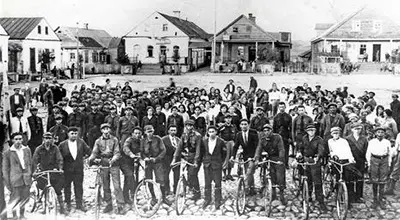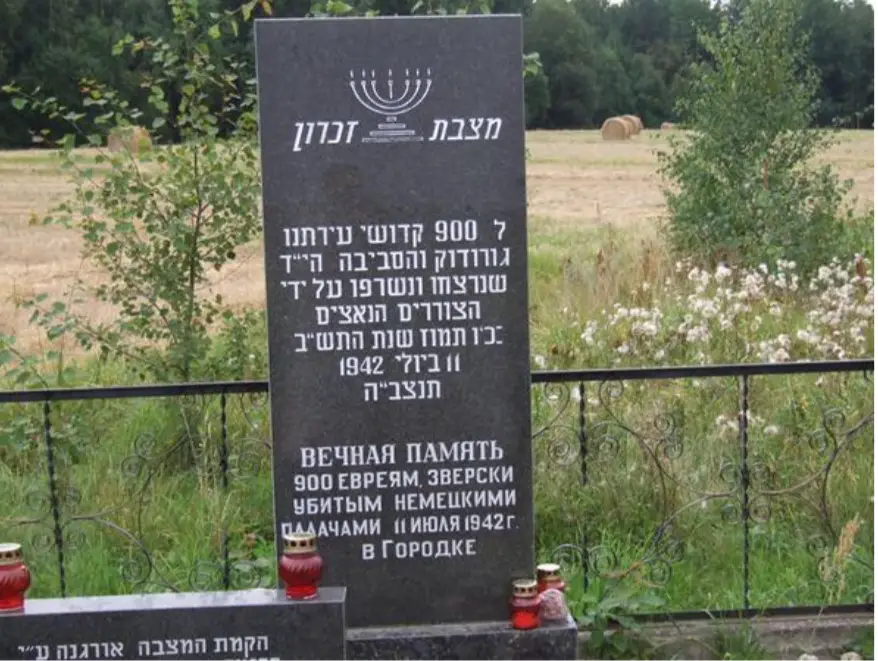Gorodok, Belarus

Horodock Jewish Youth Group 1930s
Gorodok or Horodok (Pol. Grodek Wilenski) is a town in the Vitebsk district, Belarus. The Jewish community was founded during the 18th century. In 1772, when Belorussia was annexed by Russia after the first partition of Poland, the town had 400 Jews, the majority of the population. In 1897, they numbered 3,413, constituting 68% of the population. They owned most of the stores and many had auxiliary farms.
Between the two world wars, the town belonged to Poland. In 1921 the Jews numbered 990. In 1926, Jews constituted 48% of the population (2,660), most of whom were Chabad Hasidim. Jews were petty traders and artisans. Most of the children attended the Tarbut Hebrew school.
In 1939, the Jews numbered 1,584 (22% of the total population).
Gorodok was occupied by the Germans on July 9, 1941. In August, 2,000 Jews were murdered. Approximately 1,500 were imprisoned in a ghetto on March 13, 1942. Two hundred were sent to the Krasne labor camp and 400 followed on July 11, when the remaining 900 were murdered. The Krasne camp was liquidated in March 1943. Fugitives from the ghetto played an active role in the local partisan movement.
 |
 |
|
Memorial monument to 900 martyrs of our city Gorodok and the surrounding area, |
Commemorating the 710 victims of Gorodok ghetto murdered and burned by the |
BIBLIOGRAPHY
Sefer ha-Partizanim ha-Yehudim, 1 (1958), 479.
[Yehuda Slutsky /
Shmuel Spector (2nd ed.)]
Source: Encyclopaedia Judaica. © 2007 The Gale Group. All Rights Reserved.
See also: “Horodok - A Shtetl’s Story 1920-1945.” Hebrew with English subtitles.
Photos courtesy of Tierza Amizur Berman.


